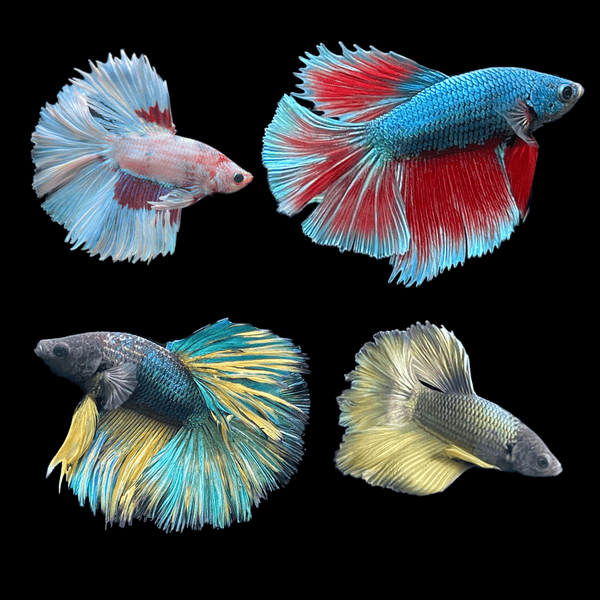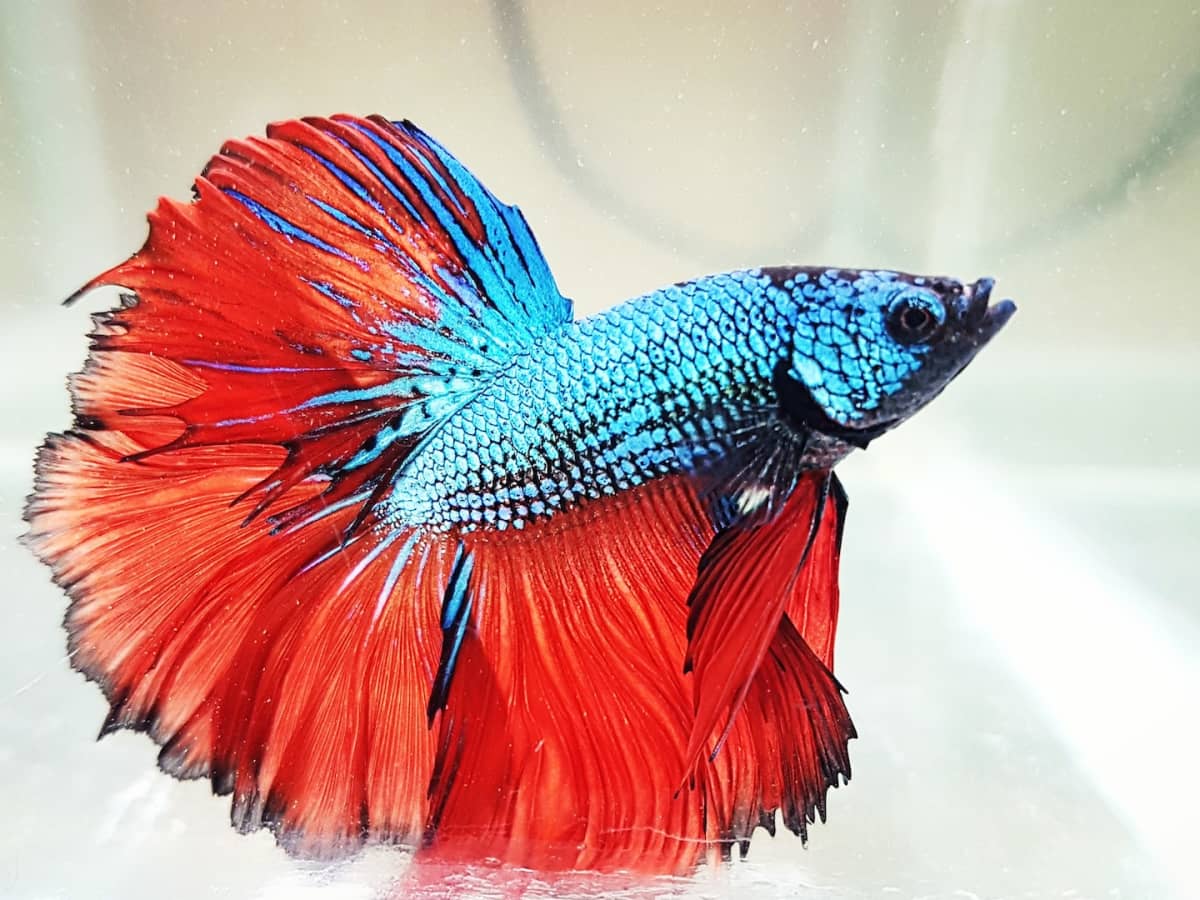Just How to Present Betta Fish to a Community Storage Tank Securely
Just How to Present Betta Fish to a Community Storage Tank Securely
Blog Article
Reproducing Betta Fish: a Comprehensive Step-By-Step Overview to Efficiently Raising Infant Bettas From Eggs to The Adult Years
Reproducing Betta fish is a meticulous undertaking that requires careful planning and execution to make certain the effective advancement of fry from eggs to mature fish. Picking genetically varied breeding pairs with desirable qualities is just the start; developing an optimal setting and comprehending the ins and outs of the reproducing procedure are equally essential. As the male Betta carefully constructs a bubble nest and guards the precious eggs, the succeeding phases of treatment and change need interest to information and knowledge of finest methods. How does one browse the tough yet fulfilling course of nurturing these vivid creatures to the adult years?

Choosing Reproduction Pairs
When embarking on the trip of breeding Betta fish, picking the right reproduction pairs is critical to accomplishing preferable traits and a healthy and balanced lineage - betta fish. The very first step in this procedure is to identify the particular attributes you desire to boost or preserve, such as shade, fin type, and body form. It is vital to select genetically diverse pairs to stay clear of inbreeding, which can result in health issues and unwanted attributes
Review possible breeding candidates very carefully. A healthy male Betta needs to exhibit lively shades, an active temperament, and well-formed fins, while the woman must likewise show dynamic pigmentation and a rounded tummy, indicating readiness for spawning. Observing the personality of both fish is essential, as hostile or excessively reluctant individuals might not breed effectively.
Maintaining documents of the parent fish's origins can assist you track genetic traits and prospective concerns. Eventually, spending time in the option process will significantly enhance the probability of producing solid, vibrant offspring that fulfill your reproduction goals.

Preparing the Breeding Tank
Developing an ideal breeding environment is a key action after choosing ideal sets for Betta fish. The breeding storage tank need to be particularly created to offer comfort and stimulate the all-natural reproduction actions of the fish. Beginning with a tank dimension of a minimum of 10 gallons to make sure ample space for both the man and women Bettas.
Preserve a gentle filtering system to keep the water clean while avoiding solid currents that can worry the fish. Furthermore, an air rock can be included in offer oxygenation without interfering with the water surface area way too much.
Temperature guideline is important; goal for a secure array of 78-82 ° F(25-28 ° C) utilizing a dependable heater. The pH degree should be preserved in between 6.5 and 7.5, and regular water adjustments are required to make certain high water quality.
Incorporate drifting plants or spawning sponges to produce hiding spots for the female, while likewise urging bubble nest structure by the man - betta fish. Make sure the storage tank is complimentary from sharp decors and any kind of potential risks, as the well-being of the fish ought to always be focused on during this critical stage of breeding.
The Breeding Process
Normally, the reproducing procedure for Betta fish involves a series of unique and observable behaviors that show readiness for reproduction. The male Betta begins by developing a bubble nest at the water's surface area, which works as a site for the fertilized eggs. This nest is crucial, as it supplies a safe environment for the eggs till they hatch out.
As soon as the nest is established, the man will certainly display courtship behaviors, such as flaring his fins and showing lively shades to attract the lady. The woman, upon noticing the man's readiness, will respond by showing upright red stripes along her body, signifying her receptiveness.
When the women approaches, the male engages in a breeding dance, often causing a welcome referred to as the "spawning." Throughout this accept, the lady releases her eggs, which the male feeds right away. The fertilized eggs then drop to the bubble nest, where the male meticulously gathers and returns them to the nest. Following this, the male presumes responsibility for protecting the nest and ensuring the safety of the eggs until they hatch, generally within 24-36 hours. This stage is essential in the reproducing procedure, laying Recommended Reading the structure for effective fry development.
Caring for Betta Fry
Caring for Betta fry calls for mindful interest to their setting and nutrition to make certain healthy development and advancement. After hatching out, Betta fry are incredibly small and susceptible, necessitating a secure and clean environment. Keeping a water temperature level in between 78 ° F and 80 ° F is vital, as Betta fry grow in warm problems. Furthermore, make sure that the water is devoid of harmful toxic substances; regular water adjustments of 10-20% are recommended to keep optimum water high quality.
Feeding Betta company website fry is similarly essential. Feed them small quantities several times a day, being careful not to overfeed, which can lead to water top quality issues.
Transitioning to Grownup Bettas
As Betta fry fully grown, transitioning them to adult Bettas is a vital phase that requires careful monitoring of their setting and social communications. This process commonly starts when the fry get to around 6 weeks of age, whereupon they can be slowly introduced to an extra structured living atmosphere.
To promote this shift, it is crucial to ensure that the water criteria-- such as temperature, pH, and ammonia degrees-- are ideal and steady. Adult Betta fish prosper in warm water (around 78-80 ° F) with a pH of 6.5 to 7.5. Progressively accommodate the fry to these conditions to lessen stress.
Social communications are one more essential aspect; male Bettas are notoriously territorial and hostile. Therefore, it is a good idea to different males into private tanks as they mature. Women Bettas can be housed with each other, yet care needs to be taken to check for indications of aggression.
Additionally, dietary changes should be made as the fry grow. Include top quality pellets and live foods to support their development and health. By taking care of these aspects effectively, you can promote an effective shift to the adult years for your Betta fish.

Final Thought
Effective reproduction of Betta fish calls for careful attention to information throughout the whole procedure, from review choosing genetically diverse sets to giving optimum treatment for fry. Furthermore, a well balanced diet plan and steady adaptation to adult settings are vital for the growth and growth of Betta fish.
Report this page